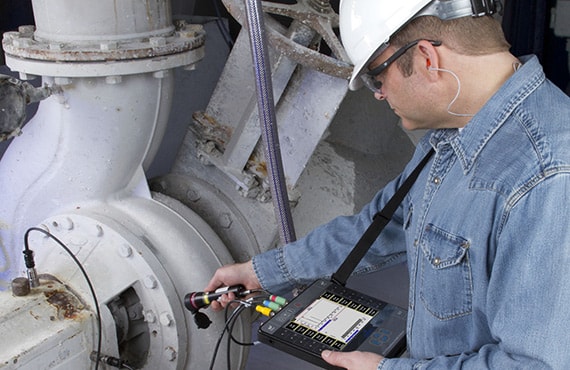ANSI Z87.1 – Eye Protection Impact Resistance Test
The ANSI Z87.1 standard is a benchmark in the field of occupational safety and health, particularly for those working in sectors where eye protection is critical, such as oil and gas testing. This standard ensures that protective eyewear provides adequate impact resistance to safeguard workers from hazards like flying particles, splashes, or other potential impacts.
Developed by the American National Standards Institute (ANSI) and the American Society for Testing and Materials (ASTM), ANSI Z87.1 is widely recognized in industries that require stringent safety protocols. In oil and gas testing, where harsh environments and high-risk operations are common, compliance with this standard is essential to mitigate risks to personnel.
The test evaluates the ability of eye protection devices to withstand impact from a 50-gram steel ball dropped from a height of 36 inches (91.4 cm). The device must not exhibit any defects or damage that would impair its performance. This robust testing ensures that safety glasses, goggles, and other protective eyewear can be relied upon in critical environments.
Compliance with ANSI Z87.1 is crucial for quality managers and compliance officers who oversee workplace safety protocols. R&D engineers involved in the design and development of protective equipment must also ensure their products meet these stringent standards to protect end-users effectively. For procurement departments, adherence to this standard ensures that they source high-quality, reliable eyewear.
The test procedure involves subjecting a pair of goggles or glasses to an impact from a 50-gram steel ball dropped from a specified height. The device must remain intact and not exhibit any damage that could compromise its protective capabilities. This includes ensuring the lens does not crack, shatter, or deform in such a way that it compromises visual clarity.
The test is designed to simulate real-world conditions where workers may be exposed to impacts from flying objects or particles. By meeting ANSI Z87.1 standards, manufacturers demonstrate their commitment to providing robust and reliable protection for individuals working in high-risk environments. This standard is particularly important in oil and gas testing, where the integrity of protective eyewear can mean the difference between safety and injury.
For those involved in procurement or R&D, understanding the test parameters and specimen preparation is crucial. The specimen must be prepared according to the specified guidelines, which include ensuring that the device is free from any defects before testing. This ensures accurate and reliable results that reflect the true performance of the protective eyewear.
- The ANSI Z87.1 test evaluates devices under controlled conditions to ensure they meet impact resistance requirements.
- Compliance with this standard is essential for industries where worker safety is paramount, such as oil and gas testing.
- The test ensures that protective eyewear remains intact and performs reliably in high-risk environments.
International Acceptance and Recognition
Ansi Z87.1 is widely recognized across the globe, not only for its rigorous testing protocols but also for its comprehensive approach to safety in occupational settings. This standard has been adopted by various countries due to its stringent requirements and proven effectiveness.
Many nations have incorporated aspects of ANSI Z87.1 into their own national standards, ensuring consistency and reliability across borders. For instance, the European Union’s Personal Protective Equipment Directive (PPE) includes provisions that align with ANSI Z87.1 for certain categories of protective eyewear.
Other countries like Canada, Australia, and New Zealand have also recognized the importance of this standard, adopting it as a benchmark for safety in various industries. This international acceptance underscores the universal value of the ANSI Z87.1 standard in ensuring worker safety worldwide.
The widespread recognition of ANSI Z87.1 contributes to a safer global workforce by promoting consistent standards and practices across different regions. Compliance with this standard is not only a measure of quality but also a symbol of commitment to worker safety and well-being.
Environmental and Sustainability Contributions
- The ANSI Z87.1 standard contributes to environmental sustainability by promoting the use of durable, high-quality protective eyewear that can withstand harsh conditions without compromising safety.
- This reduces waste associated with frequent replacement of less robust equipment, thereby minimizing landfill contributions and resource depletion.
- By ensuring reliable performance in challenging environments, ANSI Z87.1 helps prevent accidents that could lead to greater environmental hazards or cleanup costs.
Use Cases and Application Examples
In the oil and gas testing sector, compliance with ANSI Z87.1 is particularly critical given the high-risk nature of operations. Workers in this industry face numerous hazards that can threaten their visual safety, making robust eye protection essential.
For instance, during pipeline inspections or wellhead maintenance, workers may encounter flying debris from equipment failures or unexpected pressure releases. The ANSI Z87.1 standard ensures that protective eyewear can withstand these potential impacts without compromising the user’s ability to see and react quickly.
In offshore drilling operations, where harsh weather conditions and mechanical hazards are common, compliance with this standard is mandatory. It helps ensure that workers have reliable eye protection in environments where even minor vision impairment could lead to catastrophic accidents.
Additionally, laboratory technicians involved in chemical analysis or explosive testing benefit greatly from ANSI Z87.1-compliant equipment. The high-impact resistance of these devices ensures that they remain effective and safe under the most demanding conditions.





